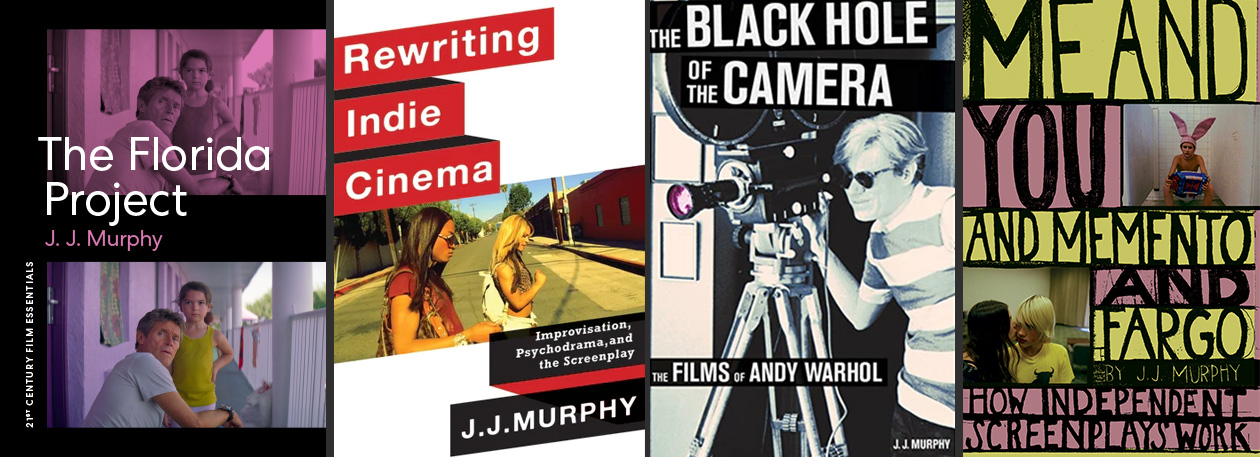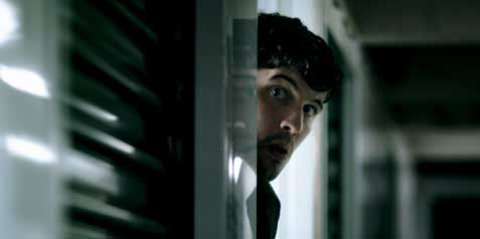

Aaron Katz’s Dance Party USA (2006) and Quiet City (2007) established his career as one of the best young independent American directors. Quiet City abandoned a written screenplay in favor of structured improvisation, allowing his actors – Cris Lankenau and Jamie Fisher – to improvise their scenes to the point where they shared screenwriting credit with the director. What serves to distinguish Katz’s films from those of his peers who employ similar strategies are strong formal concerns – his films are visually striking in ways that the work of certain other filmmakers simply aren’t. Memphis-based filmmaker Kentucker Audley, who made Team Picture (2007) and Open Five (2010), for instance, recently told an interviewer: “I try to be visually tame . . . But I’m basically of the opinion that style is the easy part, and I always resist doing the easy thing.” Yet Katz’s films benefit precisely from the tension that arises between a casual approach to structure and working with actors and a more rigorous visual style. This holds true for his absorbing new film Cold Weather, a mystery set in his home town of Portland, Oregon.
Expectations ran high when, working on a larger budget (reportedly low six figures) after micro-budgets, Katz turned his attention to genre. We all remember what happened when David Gordon Green, who, like Katz, also graduated from the film program at North Carolina School of the Arts, tried to be more commercial by making Undertow (2004). After the brilliance of the character-based George Washington (2000) and All the Real Girls (2003), the genre elements in Undertow wound up seeming fairly contrived. Katz’s Cold Weather, on the other hand, manages to have fun with genre without getting too wrapped up in audience expectations of what needs to happen. Rather than an Agatha Christie-type mystery, Cold Weather might better be described as a slacker mystery, as epitomized by a stakeout scene in which the film’s protagonist, Doug, his co-worker, and then his sister sit in a car and eat “Swedish Fish” for several minutes. Adam Nayman in Cinema Scope talks about the film having “a crackling plot,” but, for me, Cold Weather uses plot merely as an opportunity to delve deeper into his characters.
Cold Weather begins with a shot of a rain splattered windowpane with the background out of focus, followed by a buoyant original score by Keegan DeWitt. The focus changes to reveal the courtyard of an apartment building, as a light rain falls. Doug (Cris Lankenau) enters carrying a large package. The shot cuts to Doug, a forensic science dropout, and his sister, Gail (Trieste Kelly Dunn), preparing a meal. There appears to be an awkward tension during dinner with their parents. Lankenau, looking scruffy and in need of a shave, proves that his endearing performance in Quiet City wasn’t a fluke. His self-deprecating demeanor once again gives him a certain charm. Lankenau has a way of breaking up his thoughts into discrete units, as if they comprise pieces of a puzzle. In response to his stepfather’s question how long he worked at an internship at a restaurant, he responds: “Two months. Like twenty hours a week . . . I mean I could have kept going, but I kind of quit . . . because . . . I didn’t get paid. And I started getting bored.” Doug discusses buying a coffee table – the large package we initially see him carrying. He tells his parents: “I’m assembling it. It’s coming right along . . . and by coming right along, I mean, not at all.”
The dialogue in Cold Weather involves excess verbiage; assertions end in negations. In the next scene, the camera focuses on a door that changes from yellow to cream color as Gail turns off the light and addresses Doug, who’s reading a book.
GAIL: All right. I’m going to go to bed now.
DOUG: Okay.
GAIL: Good night.
DOUG (sing song): Good night.
GAIL: You gonna go to bed soon?
DOUG: I don’t know. I’m not really tired.
GAIL: It weird you’re never tired.
DOUG: I’m tired in the morning.
GAIL: Yeah . . . me too. (After a very long pause) All right, I’m going to bed.
DOUG: Okay.
GAIL: Good night.
DOUG: Good night.
Screenwriting professors no doubt would flag the above dialogue as “chitchat,” but, as the scene indicates, we’re in the realm of naturalism. Between Gail’s first line and Doug’s last, the redundancy of their sentences merely attempts to fill up empty space between them, in a similar manner to Katz’s pans back and forth between the two characters. Gail’s pregnant pause indicates her concern for Doug, who is crashing with her. The next day he persuades her to skip out of work to go “whale watching” with him. The trip up the coast serves no narrative function other than to provide a sense of the Oregon landscape.
Doug’s takes a job at the ice factory, which provides Katz and his talented cinematographer Andrew Reed (using a RED camera) with an opportunity to explore an assembly line where bags of ice are produced. Doug meets a DJ co-worker, Carlos (Raúl Castillo), with whom he becomes fast friends, and at roughly fifteen minutes, he meets his ex-girlfriend, Rachel (Robyn Rikoon), at a coffee shop after she turns up unexpectedly from Chicago. She asks, “How’s living with your sister?” Rachel presses, “You like it more than living with me?” Surprisingly, he equivocates: “I don’t know, maybe not.”
The two guys and two women get together to play cards, which is followed by a montage that includes a spectacular shot: the camera slowly zooms in on Doug and Rachel as they stand on a bridge that overlooks a breathtaking waterfall. Carlos and Rachel attend a Star Trek convention together. Soon afterward, Carlos shows up at Doug’s apartment, informing him that Rachel never turned up at a club where she was supposed to meet him and is now missing. Carlos implores Doug to accompany him in investigating because he knows about “mysteries.” That may be true, but it’s Carlos who functions as the catalyst, while the more apathetic Doug gets dragged into getting involved.
I’ve gone into the film’s setup at some length, but I’ll not divulge the details of the mystery even though, on some level, the intricacies involving Rachel’s disappearance serve other purposes. As Doug attempts to solve the mystery, he and Gail grow closer together. Katz doesn’t poke fun at genre conventions; he takes them seriously despite having another agenda. There’s a hilarious cameo by Brendan McFadden (one of Katz’s collaborators) as Gail’s date, Swen. Katz’s other major collaborator, Ben Stambler, plays the hotel clerk, who gives knowing glances when Doug and Carlos rent a room together at Rachel’s motel. Another humorous exchange occurs later when Doug helps Gail navigate a porn site. She remarks, “You seem pretty familiar with how this kind of site works.” Doug’s response is a cold stare.
A Sherlock Holmes fan, Doug buys a cheap pipe to help him “think,” but we suspect the prop allows him to play the role better – even though he’s more like Frank or Joe Hardy than Holmes. The camera tracks through aisles of a grocery store and then the stacks of books in a library, creating a playful connection. Baseball figures prominently in the mystery, even though Doug obviously can’t hit a ball when he visits a batting cage, and Gail butchers the pronunciation of the name of ex-Yankee Clete Boyer. Late in the film, Doug follows a suspect into a building, where Reed’s slow zoom down a corridor is reminiscent of Ernie Gehr’s Serene Velocity. Earlier, the exterior of the motel has a lime-colored cast, while one of the occupied rooms is lit with a yellow filter. There’s also a memorable shot of Doug climbing stairs of a train overpass as the sun flares directly into the lens, illuminating both Doug and the structure with an intense reddish orange glow. One of the major strengths of Cold Weather is its extraordinary attention to visual details (which, I’d argue, is hardly the “easy part” of making a film).
As Katz points out, there are other films about brother and sister relationships, namely You Can Count on Me (2000) and The Savages (2007), but the relationships in those films are far more contentious. Cold Weather on the other hand, explores the subtle yet powerful impact that siblings, such as Gail and Doug, can have one another. Katz told Nayman: “I’m interested in the idea of siblinghood as a kind of co-dependency, at once very intimate and oddly removed – like when she tells him she had a boyfriend for six months and he has no idea.” Katz is exploring that odd sense of comfort that siblings often share from having grown up together, even though he adeptly buries the motivation of his characters. We never learn anything about Doug’s past relationship with Rachel or why they broke up. Doug seems unfazed by Rachel’s return, yet his dropping out of school and lack of direction might stem from the end of their relationship. Doug and Gail appear at ease with each other, but that’s not necessarily true of their own love relationships, which they each have greater difficulty navigating.
With Cold Weather, Aaron Katz has managed to achieve something very difficult, namely he’s made three terrific low-budget films in the past four years. Some months ago, I wrote a blog about the overemphasis on social networking as marketing tools for indie films. Katz weighed in on this subject in an interview in Filmmaker. He told Scott Macaulay: “The best thing, I think, is to make a film you feel proud of and then find an audience. But I’m for anything that can get people to see a movie. It’s when [these tools] become the dominant things, it sometimes feels they are not in service of the movies.” In this sense, Katz has his priorities straight.
Cold Weather is being distributed by IFC. The film premiered at South by Southwest and has been playing the festival circuit, but I’ve been waiting for it to surface theatrically. Cold Weather is now expected to open in February.